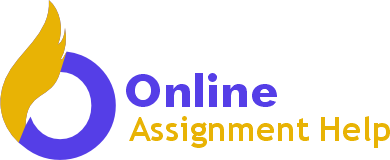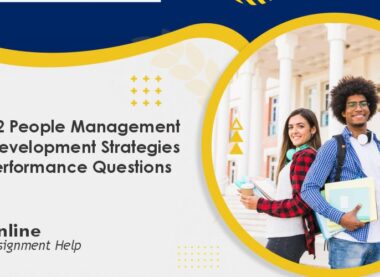Table of Contents
7CO04 Business Research in People Practice Questions
The Business Research Project
The following section provides advice and guidance about the construction of the business research report. As noted in the previous section it is important that the final submission is presented as a coherent business report, rather than a set of answers to each of the assessment
criteria.
LO1: Be able to plan a people practice business research project aimed at adding organisational value.
Assessment Criteria
1.1: Justify terms of reference for the business project
1.2: Critically analyse key publications and other evidence to underpin the research questions
1.3: Develop a range of questions aimed at addressing the project’s main focus and outcomes
Guidance
In order to meet the assessment criteria listed above you need to:
Write the introduction and terms of reference for the research project
The introduction should provide some background to the organisation and explain the business problem being addressed. This is followed by the terms of reference, which should include the project’s aim and research objectives. This section should also explore the resources required for its completion in terms of broad costs and support, and the deadline date for submission. These must be precise, manageable and achievable in the time allowed. It is a good idea to use a GANTT chart which shows a clear timeline for each stage of the project – when included as an appendix this will not be included in the wordcount.
Write a literature review which critically discusses published work relevant to the research aim / terms of reference
This requires an analysis of published material and reputable on-line sources relating to your terms of reference and provides the underpinning support for the research questions. Sources may include:
- textbooks on HR/L&D and relevant papers in peer-reviewed academic journals
- practitioner-oriented publications and reputable on-line websites, which offer a more practical treatment of the topics addressed in the project. These include: CIPD reports and surveys, government publications, material from employer organisations/trade unions, and independent think-tanks in the country where the research is undertaken.
- any other source which provides data on specialist areas of people practice. Since relatively few words are allowed for this task, it is advised that no more than 10-12 sources are actually used directly in the report; however, given that you are likely to read more than that, the full list of publications should be cited in the bibliography.
You are strongly advised to keep notes of key material when compiling your literature review. It is critical that you explore ideas by searching different publications, engaging with the arguments, and analysing the literature so it is presented in a clear and concise way in line with both the terms of reference and the research questions.
Develop a set of research questions (qualitative research) or hypotheses (quantitative research) that the research project will seek to address
Following the compilation of a literature review you need to draw on both the terms of reference and the literature review to identify one or more research questions to guide the remainder of your project. These can alternatively be in the form of hypotheses if you are using quantitative data.
LO2: Be able to justify the most appropriate research methods to collect data for the chosen project.
Assessment Criteria
2.1: Assess differences between primary and secondary data, including the value of different research methods
2.2: Justify the most appropriate research methods to support the project’s intended outcomes
2.3: Critically assess the ethical issues surrounding data collection, usage and storage for the project
Guidance
In order to meet the assessment criteria listed above you need to produce a methodology section for the proposed project which gives consideration to:
Research approaches and research designs
You should be able to discuss the differences between different types of data available to you, and different methodologies that could be deployed within research projects, defending the research design decisions that you have made
Primary data is material you collect yourself, either individually or in a team. It is important to pilot the questions to be used in an interview, focus group or survey to make sure they are appropriate.
Secondary data is material collected by someone else, either as part of an internal survey in the same or another organisation, or published data sets such as in the CIPD research reports or from the Office for National Statistics. Both types of data can be used in your BRPP report, but it is crucial that you do not over-stretch yourself here.
Data collection and analysis methods
Quantitative methods – such as surveys, can provide greater validity because there are typically more respondents, but questions must be unambiguous and simple to answer in order to have confidence in the findings.
Qualitative methods – such as interviews, focus groups, and participant observation, provide more in-depth findings and allow for more nuanced explanations. However, respondents must be
able to answer questions fully and with relevant knowledge – for example, regarding their own experience of an induction programme. Sample composition and methods of sample selection are key. Data from different categories of respondents is useful to check on accuracy or understand alternative perspectives on an issue.
If appropriate, both types of methods, and/or both primary and secondary data, can be used together. It is however essential that the project includes the collection of some primary data.
Research ethics
When exploring the issue of research ethics, people professionals are expected to display ethical practice, particularly if they are collecting data on other people. Ethical issues arise at several stages in the project, and some guidance can be found in the CIPD’s 2019 publication Ethics at Work: an employer’s guide. Key issues relate to: respondents signing an ethical approval form if data is collected from them; reassurance of anonymity within the report; a commitment not to share personal data without agreement; secure data storage provisions.
LO3: Be able to analyse data to make decisions and provide business and
people management insights.
Assessment Criteria
3.1: Appraise the costs of different approaches to data collection and analysis for the project
3.2: Design an appropriate strategy for analysing, organising and interpreting data collected from research
3.3: Present the findings of the business project clearly and logically and aimed towards the intended audience
Guidance
In order to meet the assessment criteria listed above you need to produce:
A critical discussion which explores the relative costs of different approaches to data collection and analysis (this may be included within the methodology or the findings section)
For any business research it is important that the cost implications are taken into consideration. You will need to consider the costs associated with your research methods, plus the alternative data collection methods that you considered but discarded.
When it comes to considering costs, apart from your own time, costs for the BRPP project are unlikely to be high because you will do most, if not all, of the data collection.
Some studies might require the use of Zoom, Microsoft Teams or other digital technologies which are free or require a subscription. While most surveys are now done on-line, there might be costs for printing surveys if this is not possible.
A findings section which sets out, and interprets the trends or patterns within the collected
In the production of the findings section, you need to be able to demonstrate how data has been analysed, organised and interpreted. If questionnaires are comprised principally of questions with fixed choice answers you will need to tally responses, and then interpret the results. 5-point Likert scales are used regularly for this
purpose as they are quite adaptable, and it might be possible to compare results with another
survey. Stronger submissions will likely include some form of more advanced statistical analysis,
perhaps using packages such as SPSS.
If qualitative methods, such as semi-structured interviews or focus groups, have been used,
there might need to be amendments to the original analytical framework if new ideas emerge which capture nuances and greater complexity in people’s mindsets.
A discussion section which relates the findings to the existing literature base (literature may be drawn from both the literature review section itself and additional sources as required)
An analysis of the findings from primary research should relate to the initial research questions or hypotheses, plus comparing and contrasting your findings with those identified by the literature, cross referencing to the original sources reviewed.
Findings should be organised, so they relate back to the research questions or hypotheses that were outlined earlier in the report. It is important not to drift into areas which are marginal to your main argument. When discussing the key trends and patterns the learner should relate the key findings back to the literature base, this is particularly important if the results do not fit with the original hypotheses or research questions. In such cases they should be discussed openly in a way which both engages the audience and encourages discussion.
LO4: Be able to propose recommendations based on conclusions derived from the research and analysis.
Assessment Criteria
4.1: Justify conclusions derived from analysis of key findings, which align to the terms of reference
4.2: Propose business-focused recommendations, action points and a cost-benefit analysis
4.3: Evaluate the success of the project, including ways in which to improve future project design and delivery
Guidance
In order to meet the assessment criteria listed above you need to produce a conclusion section to the business project which contains the following:
Answers to the original research questions (or hypotheses) which show how the business project has addressed the terms of reference
This should summarise the research by drawing the main threads from the secondary research (literature) and primary research. This conclusion to the report needs to be concise, clear and accurate, and show how the answers to the research questions (or hypotheses) were derived from the data and that key messages are understood. Being able to communicate in an engaging way is necessary to reassure sponsors that the data is accurate, the conclusions add value, and there is little or no risk to the organisation’s reputation
and performance.
Recommendations that flow from the findings of the research, including an action plan and cost-benefit analysis
The recommendations from the report must be in the form of a set of practical strategic actions the organisation is recommended to implement to address the initial project aim and suggestions for further investigation as necessary. The Recommendations section is included in the wordcount.
The recommendations should be supported by an operational implementation plan and a strategic cost-benefit analysis aimed at the decision makers. Please note the action plan and cost-benefit analysis should be presented as tables and inserted as appendices. When placed in the appendix both are excluded from the wordcount.
The identification of costs is not simple, so relatively easy-to-measure costs – such as loss of production, levels of absence, costs of recruitment and selection and/or training – are typically used. However, it is also important to consider costs that are more difficult to measure – for example, a poor organisational reputation for inclusion and diversity can easily put off potential applicants. To create a persuasive business report, it is important to highlight the potential business impact, so for example, any cost savings and/or an increase in revenue that could be associated with the recommendations.
A reflection on the process of researching and writing the business report, with consideration given to own continuing professional development
Please note your reflection is excluded from the word count.
Before putting the report away, it is then important to take a step back and reflect on whether or not, and in what way, the project could have been improved. For example, were the timescales in the GANTT chart appropriate, how could the literature search have been improved, were any questions unclear to respondents, or could the recommendations have been presented more effectively to senior management?
If it is decided nothing could have been improved, it is likely that self-reflection has not been deep enough. Learning theory should be used to underpin your reflective analysis; see readings in this unit, as well as the Advanced Diploma learning and development units.
The conclusions and recommendations from the project need to recognise these issues, as should the self-reflection, in order for you to demonstrate your ability to think carefully and creatively when investigating issues. This applies particularly to some elements of data analytics, where you need to take great care in choosing which metrics to use.
7CO04 Assignment Answers
Executive Summary
The purpose of this study is to assess how SATORP may use L&D programs to better connect staff development with the business’s overall goals, which include building a comprehensive petrochemical complex. An extensive analysis of the literature demonstrated the significance of learning and development (L&D) for organisational success. It also emphasised the promise of AI-driven personalised learning, the relevance of continuous learning, and the seamless integration of L&D with strategic objectives. Although certain deficiencies and areas for enhancement were identified, primary research, which included employee surveys and interviews, showed that most people agreed on the value of continuing skill development and the efficacy of present L&D programs.
Learning Outcome 1
1.1 Terms of Reference
The Saudi Aramco Total Refining and Petrochemical Company (SATORP) is one of the most advanced refineries in the world, with a processing capacity of 460,000 barrels per day of Arabian Heavy Crude to produce petroleum and petrochemical products with a commitment to the highest standards of Health, Safety, and Environment. The main problem at SATORP is low skills and knowledge levels that have become a major effect on the operations of the company (Crawshaw, 2020). This has been evidenced by the delayed completion of several projects at the company. The average project delay in the previous year was 20% beyond deadline day and in the current year the average is 25% beyond deadline. The aim of this project is to evaluate how SATORP can leverage its L&D initiatives to strategically align employee skill development with the specific needs and challenges of the ongoing strategic expansion, which is to construct a petrochemical complex that will be integrated with SATORP’s existing refinery for maximum operational synergy (Rajasinghe and Allen, 2020). The objectives are to conduct a literature review on the organisational issue and people practice, conduct primary research, analyse data, and offer recommendations. The resources include costs on research materials, facilitation expenses, food and beverages, and handouts among others. It will also take up to 3 months as evidenced in the appendix by the GANTT chart.
1.2 Literature Review
Human resources development also known as learning and development plays a central role in the improvement of the performance and effectiveness of employees and projects. It is important for organisations to invest in L&D in order to improve staff performance, encourage flexibility and organisational success. Argote et al. (2021) have elaborated on how organisational learning processes are relevant to the enhancement of the employee skill set. Such processes focus on knowledge sharing, learning by interaction and discovery, and creativity. That way, strong organisational learning structures yield positive results through knowledge and skills acquisition, imperative for enhanced performance (Rajasinghe and Allen, 2020). Specifically, organisations that possess a commitment to learning may create a greater ability to navigate changes which would improve an organisations’ performance in terms of project completion. Integrating learning in the community promotes among employees the spirit of seeking knowledge and applying it to the organisational setting and hence opens the doors for constant organisational development.
In a more recent study, Collins (2021) underscored the impact of ensuring a good fit between L&D interventions and organisations’ plans. Relating the arguments of Collins to the RBV model, first, he noted that SHRM makes sure that L&D is directed towards developing skills that are fundamental in the pursuit of strategic objectives (Crawshaw, 2020). Based on the analysis of the match between employee and organisational needs, it can be concluded that improved results can be attained through a better fit between employee and organisational goals and objectives. This kind of alignment helps guarantee efficacy and efficiency of L&D processes as the acquired skills will be those relevant to the employee, the job role and tasks as well as the complexity of the projects being worked on. Ererdi et al (2022) highlight the importance of the Blended model of L& D particularly during ambiguity and crises. High business dynamics of today’s world call for effective L&D approaches that capable of addressing emerging issues. Hence, it is particularly important to employ a flexible approach to L&D arrangements concerning workers’ knowledge acquisition so that they could counter act in the event of a change and guarantee the projects’ successful completion (Rajasinghe and Allen, 2020). Scheduling flexibility into the L&D programs enable organisation to offer timely and pertinent training that equip employees with adequate strategies to tackle ever emerging incidents and thus enhance their crisis management skills.
Benbya et al. (2020) discuss how the effective usage of AI could improve L&D practices. They are capable of adapting programs according to the learning styles of individual learners, provide constant assessments of progress, and also offer robust feedback about evaluation on the training programs. Effective L&D is a key component of effective human capital management as it provides employees with training that is targeted to their development and readiness to effectively contribute to company projects. AI can also make recommendations of areas of skills shortage and areas that may require future skills training, thus enabling organisations ensure that they always have a relevant and capable work force. In a recent article, Gerhart and Fang (2020) discuss motivation, performance, and creativity in organisation in an attempt to fill a gap left by prior research. Basically, extrinsic motivation and intrinsic motivation in terms of self-actualisation has influence performance as seen by these authors. The main idea is that programme of L &D should not only target increase of skills but also address the question of motivation from within. When learners are intrinsically motivated to learn, and can realise self-identity gains from learning and training, it is expected that these learners would transfer their learning to practice competently resulting in improvement in performance levels and successful project completion (Tu and Wu, 2021). Hence, through nurturing and designing many different and fulfilling learning opportunities, organisational performance is increased because of improved and enhanced employees’ motivation.
Implementing L&D practices that suits the organisation enhance acquirement of relevant skills among the personnel leading to resultant project performance. By accounting for context, the overall value of learning and development initiatives can be enhanced within organisations (Strohmeier, 2020). The literature review shows that approaches to L&D are significant for improving the skills of employees and performance of the organisation. The implementation of these insights for SATORP must be translated into strategic and organic development of an L&D framework that supports its business objectives as well as fulfils the requirements of the company’s employees (Xiao et al., 2021). By applying AI, enhancing the motivation, offering coaching, and taking into account contending factors, SATORP has an opportunity to build its human capital that can promote company’s outcomes in the context of the compounds and pressures of an industry.
1.3 Research Questions
The following research questions will be essential in ensuring the success of the project and the achievement of the aim and objectives of the project. The questions specifically focus on the main organisational issue and how learning and development can help in solving the issue.
- How can SATORP strategically align its L&D initiatives with the specific needs and challenges of the ongoing strategic expansion to ensure enhanced employee skills and project performance?
- What are the most effective L&D practices that can be adopted by SATORP to address the current low skills and knowledge levels among employees?
- How can SATORP utilise AI to personalise and optimise its L&D initiatives to enhance employee skills development and project performance?
- In what ways can flexible L&D programs be designed to enhance employee skills, readiness and performance in the face of business dynamics and crises?
What role do coaching and mentorship play in the effectiveness of L&D initiatives at SATORP, and how can these be implemented to improve skills development and project performance?
Learning Outcome 2
2.1 Primary and Secondary Data
In its simplest form, primary data is data that is collected directly for the purpose of the research for which it is needed, and can be gathered through means such as surveys, interviews, experiments or observation. Although the process of collection is time consuming, exhaustive and may at times prove cumbersome, it offers a more targeted and specific information unique to the research question, and samples recent information, and enhanced control over the quality of data (Tu and Wu, 2021). However, it can be very costly, listed in terms of the coverage area and the time taken and might be inclined towards bias. On the other hand, there is secondary data that involves information that has been gathered by other people and exists in forms such as books, journals, reports, official documents and database which can be accessed on the internet (Ererdi et al., 2022). The use of secondary data has several merits as it is cheaper, easily obtained and can give a broad scope and time perspective; however, it can have limitations that it may not always suit the research questions, quality can be an issue since one cannot control the actual data collection process and it may also be old.
2.2 Justification of Research Methods
Quantitative Method
The following research will use surveys as the primary quantitative method, where a sample of 50 individuals will be selected from the company. The individuals will be selected from all departments of SARTOP to ensure collection of reliable data from the entire company. The research will employ a questionnaire with a set of 5 questions that will be measured using the Likert 5-point scale as the tool of data collection. These questions will be provided in the appendix. Survey is one of the strongest qualitative research approaches because of its ability to give increased validity in research owing to possibility of involving many people (Greer, 2021). This large-sample involvement contributes to the external validity of the study, providing a more accurate picture of the context being investigated. Questionnaires, for instance, can quickly obtain information from many people and therefore the statistical basis for applicative analysis will be strong. One of the biggest advantages of this method is that the results obtained are numerical, and can be put through tests and analyses to establish patterns, associations, and even causation all in a manner that is measurable (Pattanayak, 2020). Therefore, in the course of developing and implementing L&D strategies particularly in SATORP, using of surveys is very handy. Questionnaires are one of the most efficient methods to obtain reasonable quantitative data regarding employees’ attitudes, further training requirements, as well as existing L&D practices. This way, SATORP can organise itself for the possibility of how employees perceive the current set of L&D programs and possible changes that need to be implemented. For example, questions may be developed with the intent of determining the applicability of the training material, the quality of the training delivery and training reception, and the perceived effect of training on workplace performance (Strijker et al., 2020). Nevertheless, to attain the needed reliability and accuracy of the results, the questions of the survey should be clear and straightforward. These guidelines minimise the chances of misinterpretation of demographic variables, meaning that the results elicited will be genuine portrayals of the participants’ thoughts and experiences (Schotter et al., 2021). This aspect is important due the fact that if questions are problematic or even unclear, this will lead to generation of inaccurate or erratic findings, and this reduces the credibility of the study. Hence, selection of specific words to use in the questions and the format and order in which the questions are arranged should be done extremely carefully in order to arrive at as accurate and as complete responses as possible.
Qualitative Method
The research will employ interviews as the qualitative method, where the 50 selected responds will be required to directly respond to a set of 4 interview questions that have been provided in the appendix. Interviews, focus groups, participants’ observation lends it to be richer and more grounded than quantitative research finding (Collins, 2021). They facilitate investigation of extensive issues, the key prospect of which is possibility to provide a thorough presentation of respondents’ experiences and views. Specifically, interviews enable the use of questions with no predetermined appropriate answer as the study seeks more comprehensive and informative responses. Where personnel are providing details about their own and others’ experiences or their opinions – for example, employees’ impressions of an induction programme – this depth is beneficial (Strijker et al., 2020). Specifically, interviews are helpful because they are not as rigid and finite in terms of their design and, depending on the chosen type, producers can easily ask supplementary questions that elaborate on the respondents’ responses. This method is suitable for analysing the qualitative aspects of learners’ experience of L&D, which may involve understanding how employees receive training, and what they think about the contribution of training to their career development and work effectiveness. For SATORP, the data obtained through interviews of employees may expose more specific information on how specific programs of L&D are progressively being implemented, where exactly they can be improved or what new strategies may be further employed (Tungka, 2020). Another qualitative research method is focus groups, which involve different participants engaging in discussion, enabling conclusions to be made regarding group interactions and varied attitudes and perceptions. This is especially important in order to identify common thoughts across the spectrum of teams or departments within SATORP and how L&D initiatives may differ due to those thoughts. These are where many participants’ contributions may lead to several discussions that could develop into a valuable dialogue, which the participants can pool valuable ideas and share experiences that may not be seen during one-on-one interviews.
2.3. Ethical Considerations
An intricate consent method was developed in order to ensure that informed consent concerns were adequately addressed in the research conducted for SATORP L&D. Participants received information about the study’s goals, procedures, expected negative effects, and benefits. Participants’ anonymity and their personal information were ensured and encrypted throughout the analysis (Delery and Roumpi, 2019). In the process of survey and interview, actions were taken to ensure that no one in the photo can be identified. Measures were put in place to protect the data of individuals, leading to limited access to such information being granted to the technicians and doctors only. When developing the surveys and the interview questions, the rights of the participants were respected and the collection of the data was done in manners that were sensitive (Greer, 2021). Interview questions were asked to ensure that none of them influenced the participant’s answers in a way that made them uncomfortable.
Learning Outcome 3
3.1 Costs of Different Approaches to Data Collection and Analysis for the Project
Gathering and analysis of data happen to be essential parts of any project that involves research. The costs related to the processes of data gathering and collection can differ substantially relying on the methods that have been selected. In the case of this research project, various methods and tools of data analysis and collection will be used, hence various costs will be involved. The relative costs of the qualitative and quantitative techniques are examined based on factors like the resources needed, data analysis, survey design, and distribution. Specific figures of cost are assigned to offer a strong comprehension of the monetary implications of every method. Therefore, the costs are as follows: Design and Development will cost £500 – £1,000, Distribution: £300 – £625, Data Collection: £0 – £50, Data Analysis: £500 – £1,000. Hence the total cost will be between £1,300 – £2,675 in addition to the time cost of three months that the project will take.
AC 3.2 Analysing, Organising and Interpreting Data Collected from Research
Skills Alignment and Strategic Objectives
The perceptions on congruency of current competencies with SATORP’s strategic plan and direction reveal a mixed view from employees. Overall, 62 percent (40 percent agreeing while 22 percent strongly agreeing) of respondents found the match of their skills to the company strategic future to be partially positive. However, 24 percent are on a middle ground on this, which means that they have not taken a clear stand in this regard or they are not very clear on what side they should support. On a negative note, 14 % (10% indicating a disagree and 4% strongly disagree) feel that the match is inadequate in that, there exists a poor match between skills and strategic goals. This distribution raises the need to improve the interaction processes that may require redesigning development activities to make all employees contribute positively towards the company’s overall vision.
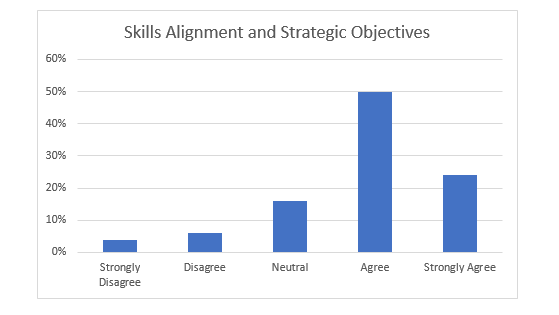
Emphasis on Continuous Skills Development
From the gathered information, one can see that employees are rather unanimous in how they perceive SATORP’s commitment to the idea of unceasing training and improvement (76%). A little more than half of respondents (52%) concur that the company is committed to the constant improvement of their skills; while another 24% indicated that they strongly agree with this particular item. A small 16% of the respondents are in the neither agree nor disagree category on this aspect, possibly implying that the respondents in this category have a less clear picture about the level of company importance towards skill enhancement. An insignificant 8% of the respondents disagree (6% somewhat disagree, 2% strongly disagree) with the statement that emphasises that SATORP pays much attention to the process of pursuing immortal learning. Overall, these insights corroborate the notion about the commitment of the organisation toward developing and promoting the talent pool of the organisation.
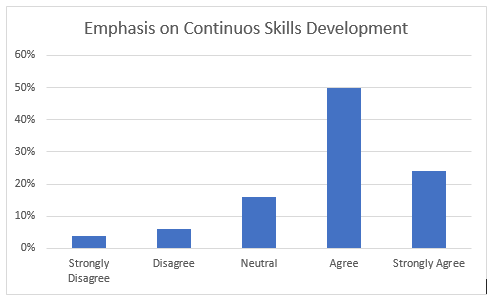
Effectiveness of the Current L&D Initiatives in shaping skills
With regards to the current Learning and Development (L&D) activities/programmes in SATORP, the reactions show disparate level of satisfaction. Respondents are more likely to disagree (5%) or strongly disagree (9%) to these assertions of improvement as only 22% strongly agree and 44% partially concur with the statement. But there is 20% of respondents being neutral which can indicate the presence of other, more skeptical people that did not feel positively about the current programs. However, the remaining 14% either doubt or disagree with L&D initiatives’ effectiveness in shaping their skills (8% disagree, 6% strongly disagree). It suggests places where there might be an opportunity to improve or modify current practice in L&D in order to further support the workforce and improve L&D’s efficiency.
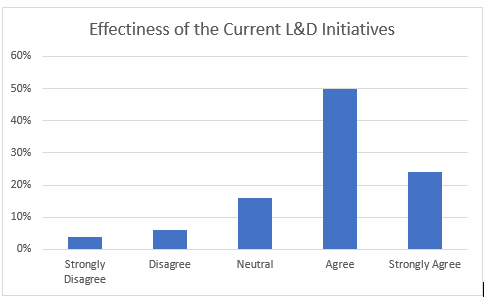
Confidence in Enhanced L&D for Strategic Expansion
According to the survey results, the level of confidence measuring 68% shows that employees believe that the upgrade on the L&D initiatives will help in the realisation of SATORP’s strategic growth strategies. A significant number of the respondents (46 %) believe that improved L&D will prove critical, with the other 22 % strongly concurring with the above assertion. However, 18% are neutral and may only be a little convinced or are still waiting to see how these initiatives will have a direct influence on strategic objectives on the ground. At the same time, 12%, 10% of them disagree and 2% strongly disagree with the enhanced L&D effectiveness. Such findings highlight the apparent concerns of the established investing in sound L&D that are in tune with the organisation’s development initiatives for better expansion and operation.
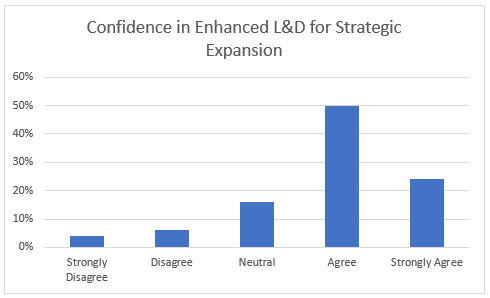
Alignment of L&D Initiatives with Long-Term Goals
The majority of respondents (74%) think that SATORP’s long-term objectives should be in line with its learning and development programs. A quarter (24%) of the respondents strongly agree that the current measures are in line with long-term aims, and half of the respondents (50%) agree. But 16% are neutral, suggesting a degree of ambiguity or confusion about how L&D initiatives fit into the larger company goals. A minority of 10%, however (6% disagree, 4% strongly disagree) believe that present L&D initiatives are not in line with long-term objectives. These results emphasise how crucial it is to make sure that learning and development (L&D) plans are well aligned with the strategic direction of the organisation in order to maximise employee growth and successfully contribute to long-term success.
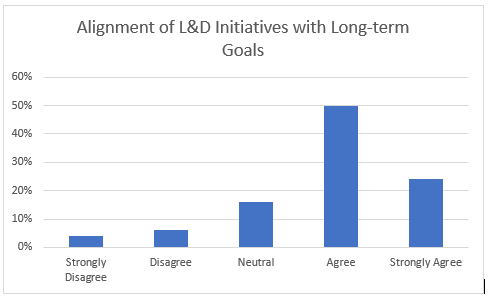
3.3. Presentation of Findings
While the majority (62%) think their abilities match strategic goals, a sizeable percentage (38%) disagree or are unsure. This shows that even while a large number of workers feel ready, there is still opportunity to make sure that every worker’s skill set is in line with the organisation’s objectives. Collins (2021) asserts that in order to optimise impact, successful L&D should be tightly linked to strategic objectives. This result emphasises the necessity of focused L&D programs to close this alignment gap.
The organisation’s focus on continual development is acknowledged by a significant majority (76%) of respondents, who share the importance of continuing education as expressed by Argote et al. (2021). The 22% who disagree or are neutral, however, raise the possibility that there are disparities in the way this emphasis is perceived or conveyed throughout the company. Improving L&D opportunity communication could close this perception gap.
The vast majority (68%) said they are confident in the contribution of improved L&D to strategic expansion. Nonetheless, 32% are either disagree or neutral, indicating that doubt coexists with optimism. This is in line with Ererdi et al.’s (2022) emphasis on the necessity of adaptable and responsive learning and development strategies during times of transition. Addressing these problems with open communication and proof of the success of L&D programs could increase trust.
Learning Outcome 4
4.1 Justification of Conclusions
- According to the analysis, a slight majority of the employees are of the view that their expertise is compatible with SATORP’s strategic priorities while 62% of the employees think otherwise. It implies that L&D programs should now pay more attention to the transfer of skills and know how. Collins (2021)’s secondary research indicates that there is the need for alignment of L&D objectives and strategic goals to achieve this. These abilities should be embedded in the L&D programs of SATORP, since it is proposed that they are essential for the firm’s strategic expansion, as it can lead to reduced project time and enhanced overall performance.
- In the survey, 22% of employees were found to be neutral or in opposition, while 76% of employees agreed with the procedure emphasising on periodic skill updating. According to Argote et al. (2021), it is argued that knowledge creation and the deliberate process of learning are critical for organisational effectiveness. SATORP must ensure that all employees are provided with the opportunities to participate in such programs, and the organisation should enhance the communication of the L&D opportunities. Training, workshop and sessions through distance learning courses which are frequent and addressed to the staffs’ specific needs are some of the best practices to improve staff member’s competency and to guarantee the company’s project s will be completed on time.
- The evidence indeed shows that there is a positive attitude of employees towards L&D activities because 74% of them believe that they are in line with the long-term goals of the organisation. By the account of Schotter et al. (2021), the goals and objectives of L&D should align with the overall organisational goals. SATORP should implement precise programs of mentoring and coaching in order to provide the staff members with some individual guidance, motivation, and feedback. This can help to cultivate skills, enhance the performance of projects, and ensure compliance with regarding personal growth, objectives of the staff, and the company’s goals.
4.2 Business-focused Recommendations, Action Points and a Cost-benefit Analysis
Recommendations
- To ensure the successful accomplishment of the present project and prevent project delay, SATORP should design targeted learning and development programs, such as tailored training programs that target identified skill gaps and align with the company’s strategic objectives (Noe et al., 2020).
- It is imperative that SATORP incorporates AI-powered individualised learning pathways. They ought to select an AI-powered learning management system and recommend customised training courses to improve staff competencies, guarantee project success, and prevent project setbacks (Benbya et al., 2020).
- The organisation ought to create a training resource library with anytime, anywhere access for staff members to enhance their abilities and aid in the project’s successful completion.
- SATORP should establish mentorship and coaching programs on the importance of skills development at the place of work. This will motivate implementation of L&D practices that will improve the skills of employees and ensure the project is successfully completed within the required time (Farndale et al., 2023).
Action Points and Cost-Benefit Analysis
- Ensure customised programs of training that target the skill gaps identified in the next 3 months. The cost of this will be £20,000 for training software and the benefit will be a decrease in the delays of projects from 25% to 10% in the next few years.
- Invest in AI-driven LMS in the next 6 months. The cost will be £50,000 to acquire LMS software and the benefit will be intensified efficiency and productivity due to enhanced employee skills.
- Design training programs in modular designs by the next 4 months. The costs associated with this will be £15,000 for the online training platforms and the benefit include the fact that skilled workers are less likely to leave, hence playing a part in the successful completion of the project.
- Identify mentors and provide appropriate training to them in the next 3 months. The cost will be £10,000 to acquire training materials and the benefit involves easier learning and development among employees to enhance their skills.
4.3 Refection
When I think back on the research and writing process for the company’s report on SATORP’s L&D activities, I can say that it was a difficult yet educational experience. A thorough assessment of the literature, data collecting via interviews and surveys, and the synthesis of findings into practical recommendations were all part of this approach. Interacting with different stakeholders yielded useful information about the company’s operational difficulties and current skills gap (Collins, 2021). After giving this experience some thought, I realised how crucial it is to have clearly stated research questions to direct the investigation and guarantee the applicability and relevancy of the information gathered. Applying Kolb’s model, I have realised that my need for ongoing professional growth has been brought to light by this project, and these include strengthening my abilities in data analysis, project management, stakeholder involvement, and research (Argote et al., 2021). I can now see the importance of experiential learning and how it applies to professional practice by thinking about how to conduct research through Kolb’s model. This will help me become a more proficient researcher and practitioner.
References
Argote, L., et al., (2021) ‘Organisational learning processes and outcomes: Major findings and future research directions’, Management science, 67(9), pp.5399-5429.
Benbya, H., et al., (2020) ‘Artificial intelligence in organisations: Current state and future opportunities’, MIS Quarterly Executive, 19(4).
Collins, C.J., (2021) ‘Expanding the resource-based view model of strategic human resource management’, The International Journal of Human Resource Management, 32(2), pp.331-358.
Cooke, F.L., et al. (2020) ‘Important issues in human resource management: introduction to the 2020 review issue’, The International Journal of Human Resource Management, 31(1), pp.1-5.
Crawshaw, J., et al. (2020) Human resource management: Strategic and international perspectives. Sage.
Delery, J. E., and Roumpi, D. (2019) ‘Strategic human resource management, human capital, and competitive advantage: Is the field going in circles?’ Human Resource Management Journal, 29(2), 111-123.
Ererdi, C., et al. (2022) ‘International HRM in the context of uncertainty and crisis: A systematic review of literature (2000–2018)’, The International Journal of Human Resource Management, 33(12), pp.2503-2540.
Farndale, E., et al. (2023) ‘Positioning context front and center in international human resource management research’, Human Resource Management Journal, 33(1), pp.1-16.
Gerhart, B., and Fang, M. (2020) ‘Pay, intrinsic motivation, extrinsic motivation, performance, and creativity in the workplace: Revisiting long-held beliefs’, Journal of Applied Psychology, 105(7), 749-763.
Greer, C.R., (2021) Strategic human resource management. Pearson Custom Publishing.
Noe, R.A., et al. (2020) Fundamentals of human resource management. McGraw-Hill.
Pattanayak, B., (2020) Human resource management. PHI Learning Pvt. Ltd.
Rajasinghe, D. and Allen, C., (2020) ‘Coaching for workplace learning and development’, The Future of HRD, Volume II: Change, Disruption and Action, pp.147-175.
Schotter, A.P., et al. (2021) ‘Organisational and comparative institutionalism in international HRM: Toward an integrative research agenda’, Human Resource Management, 60(1), pp.205-227.
Strijker, D., et al. (2020) ‘Research methods in rural studies: Qualitative, quantitative and mixed methods’, Journal of Rural Studies, 78, pp.262-270.
Strohmeier, S., (2020) ‘Digital human resource management: A conceptual clarification’, German Journal of Human Resource Management, 34(3), pp.345-365.
Tu, Y. and Wu, W., (2021) ‘How does green innovation improve enterprises’ competitive advantage? The role of organisational learning’, Sustainable Production and Consumption, 26, pp.504-516.
Tungka, N.F., (2020) ‘Combining qualitative and quantitative methods in data analysis’, Sintuwu Maroso Journal of English Teaching, 2(1), pp.25-28.
Xiao, X., et al. (2021) ‘Analysis of real-world implementation of the biopsychosocial approach to healthcare: evidence from a combination of qualitative and quantitative methods’, Frontiers in Psychiatry, 12, p.725596.
Appendices
GNATT Chart
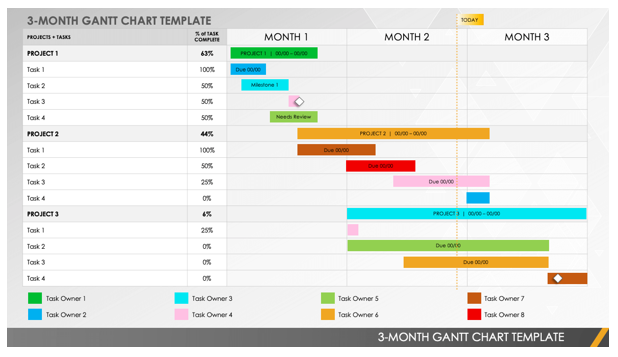
Questionnaire
My current skills are in line with the strategic objectives of the company.
- 1 (Strongly Disagree): 2 respondents (4%)
- 2 (Disagree): 5 respondents (10%)
- 3 (Neutral): 12 respondents (24%)
- 4 (Agree): 20 respondents (40%)
- 5 (Strongly Agree): 11 respondents (22%)
My company emphasises on the need to continuously develop my skills.
- 1 (Strongly Disagree): 1 respondent (2%)
- 2 (Disagree): 3 respondents (6%)
- 3 (Neutral): 8 respondents (16%)
- 4 (Agree): 26 respondents (52%)
- 5 (Strongly Agree): 12 respondents (24%)
The current L&D initiatives at the company have helped improve my skills.
- 1 (Strongly Disagree): 3 respondents (6%)
- 2 (Disagree): 4 respondents (8%)
- 3 (Neutral): 10 respondents (20%)
- 4 (Agree): 22 respondents (44%)
- 5 (Strongly Agree): 11 respondents (22%)
I am confident enhanced L&D initiatives will play a key role in the success of SATORP’s strategic expansion.
- 1 (Strongly Disagree): 2 respondents (4%)
- 2 (Disagree): 5 respondents (10%)
- 3 (Neutral): 9 respondents (18%)
- 4 (Agree): 23 respondents (46%)
- 5 (Strongly Agree): 11 respondents (22%)
I believe the L&D initiatives should be aligned with SATORP’s long-term goals.
- 1 (Strongly Disagree): 2 respondents (4%)
- 2 (Disagree): 3 respondents (6%)
- 3 (Neutral): 8 respondents (16%)
- 4 (Agree): 25 respondents (50%)
- 5 (Strongly Agree): 12 respondents (24%)
Interview Questions
How effective do you find SATORP’s current L&D programs in addressing skill gaps for our strategic expansion?
How do you think SATORP’s L&D initiatives compare to industry standards and best practices?
How well do you believe our L&D programs align with SATORP’s long-term strategic goals?
What additional skills or knowledge do you think are needed to support SATORP’s expansion that our current L&D programs do not cover?
